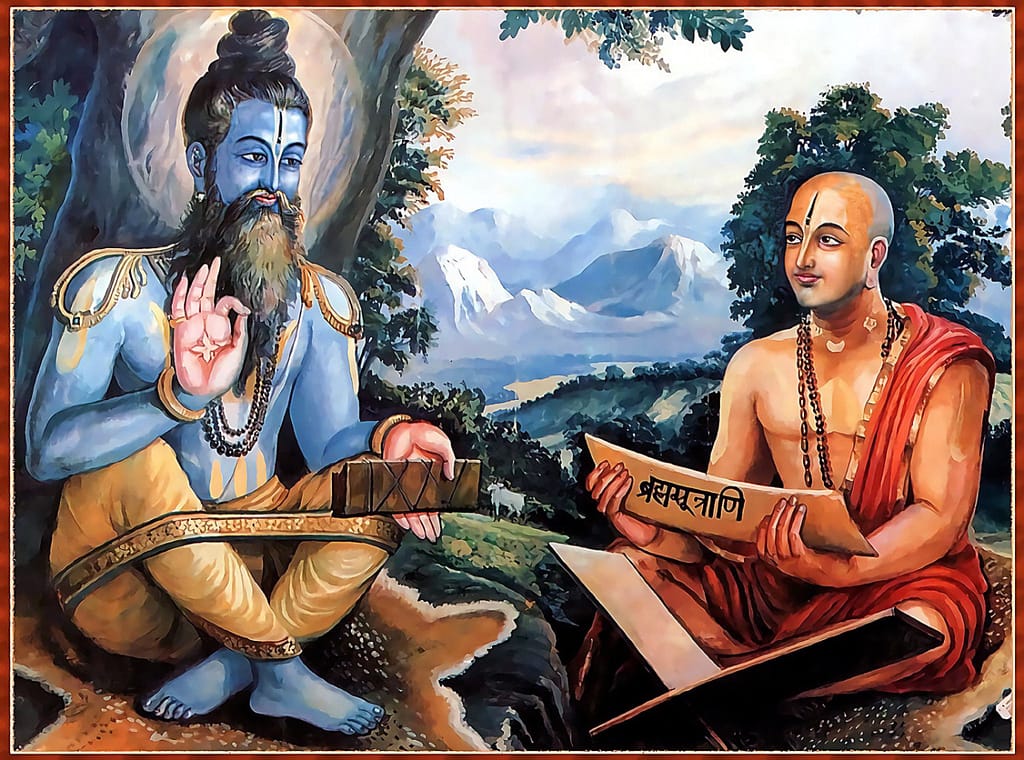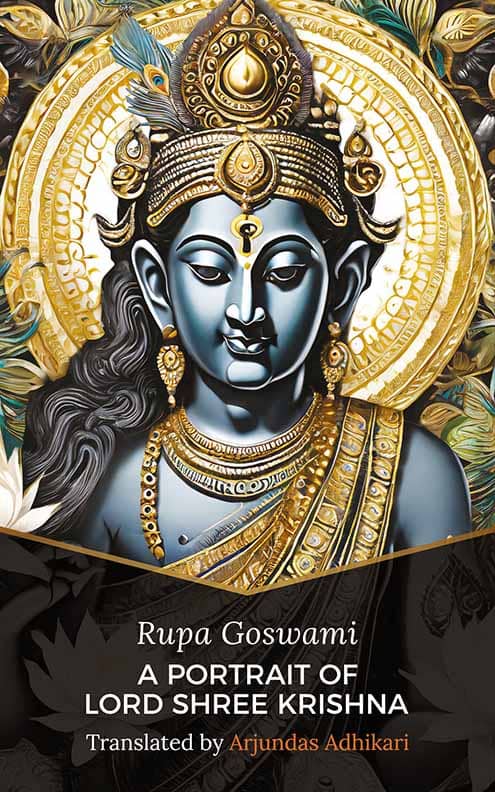
Rupa Goswami’s great Sanskrit drama, Vidagdha Madhava, a.k.a. A Portrait of Lord Shree Krishna, is the story of an astonishing sapphire-blue complexioned youth whose business it was to mind His father’s great herd of cows in the forested realm of Vrindavan many thousands of years ago. The dominant characteristic of this brave, young handsome hero, as set out in Rupa Goswami’s, A Portrait of Lord Shree Krishna, is ineluctable attractiveness. No one who happened to encounter this dazzling boy, Shree Krishna, failed to be captivated by Him.
But the story of Krishna’s power to attract goes beyond story and beyond legend.
The Sanskrit word, pratyaksha, means to experience directly. Aside from learning from the Sanskrit literatures about others’ descriptions of the Supreme, the Vedas advocate seeing the Supreme oneself, that is to say, directly, something that the word pratyaksha effectively conveys – if you like, seeing with one’s own akshas – eyes.
To demonstrate how the Sanskrit drama, Vidagdha Madhava, a.k.a. A Portrait of Lord Shree Krishna, is much more than a sentimental love story, references can be made to the philosophical codes of the Vedas that qualify the spiritual nature of its theme.
The following aphorisms found in the philosophical section of the Vedic literatures known as veda-anta (lit. “knowledge’s end”) concern the precise nature of the Absolute Truth:
- janmadyasya yatah or “that from which everything originated”
- parasya shaktir vividhaiva shruyate or “manifesting a prodigious variety of extraordinary phenomena”
- raso vai sah or “blissful”
- anandamayo ‘bhyasat or “excels in bliss”
In his commentary on his own veda-anta, the author (Vyasadev) points out that all his veda-anta aphorisms directly describe the nature of Shree Krishna, whom he denotes therein as param purusha, or the Supreme Person. Shree Krishna reveals the same in confidence to His friend Arjuna, and also says that a proper understanding of His existence is the key to being liberated from birth and death.
With this in mind, I quote an excerpt from a part in Rupa Goswami’s second great spiritual drama, Lalita Madhava, where the cowherd girl, Radharani, is disconsolate about Shree Krishna’s leaving His cowherd village for an indefinite period of time.
Radha. [Cont’d.] Go tell the illustrious prince to give Me My release,
You see, My concern’s that My life breath’s just going to cease,
My hurting for Him’s firewood with which Cupid’s torching Me.
[To a myna-bird, stage left.] Oh! But, here’s a messenger from Krishna – obviously;
Alright, myna-bird – why, you can tell Me straight away –
Did our hero smite the tyrant that He travelled to to slay?
Does He call for a chariot, to return now to His friends?
[Overwhelmed, She cries.] What will the elders think of Me? This hurting never ends;
How could it? I can’t hear His flute – where is that silver tongue?
No patience at all, will die for being this unstrung –
Where’s My love? I’m simply cursed – Shree Krishna isn’t here.
Radharani’s desperately missing Shree Krishna, the personification of bliss (whose name aptly means “all-attractive”) and the Supreme Person, is a very singular kind of desperate missing that has a bearing on ordinary love, but altogether belongs to the world of immortal Absolute Truth.
Arjundas Adhikari

